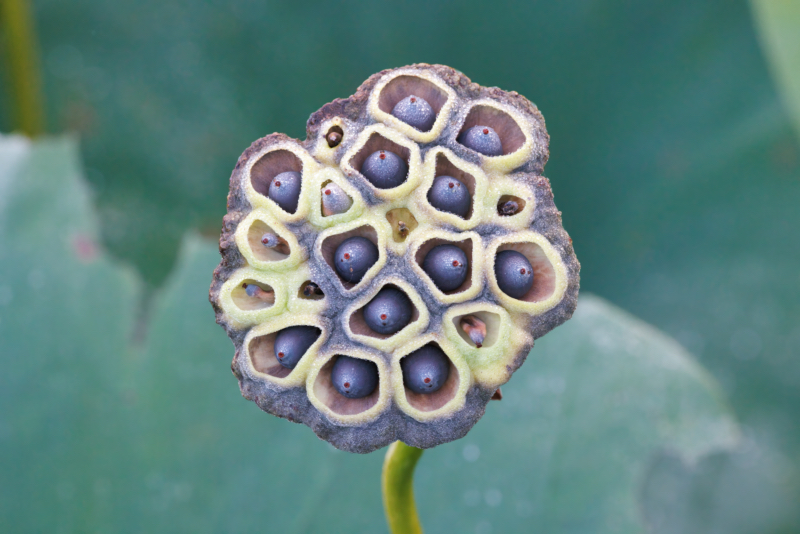I recently took a photo at Reeve’s Slough in the Sequoyah National Wildlife Refuge in Oklahoma. It features a seed pod from the American Lotus, an aquatic plant native to the eastern United States. This plant plays a remarkable role in its ecosystem and provides countless opportunities for observation and photography.

Recognizing the American Lotus
The American Lotus is easily identified by its large, round leaves, which can span over two feet in diameter, and its beautiful yellow flowers that bloom during summer. These flowers are a striking sight against the water’s surface. As the flowers fade, the plant produces its distinctive seed pods. Initially green and plump, the pods house rows of edible seeds. Over time, they mature and dry out, turning brown before splitting open to release the seeds into their environment.
Edible Seeds and Conservation
The seeds of the American Lotus are edible and prized for their sweet, nutty flavor, often compared to chestnuts. While they can be consumed, it is prohibited to collect or remove seeds from protected areas like National Wildlife Refuges. Allowing the seeds to fall back into the water is crucial for sustaining healthy plant populations. These seeds play a vital role in the ecosystem’s balance. As a photographer, I prioritize observing and documenting this fascinating natural process while leaving the habitat undisturbed. The intricate, lattice-like texture of the dried seed pods presents a unique photographic challenge and showcases the plant’s natural artistry.
Ecological Importance of Seed Pods
Beyond their aesthetic appeal, American Lotus seed pods serve significant ecological functions. The seeds provide nourishment for waterfowl and other animals, contributing to the food web. Groups of seed pods and leaves create habitats and shaded areas for small fish and aquatic creatures, promoting biodiversity. Once released, the seeds float on the water’s surface, often traveling to new locations to establish fresh colonies of American Lotus.
Capturing the Lotus Lifecycle
Photographing the American Lotus throughout its lifecycle—from vibrant blooms to the development and dispersal of its seed pods—is a deeply rewarding experience. It offers the chance to document the plant’s beauty and ecological role. Reeve’s Slough, with its rich population of American Lotus, provides an ideal location to observe these seasonal transformations. The abundance of plants there makes it possible to witness and document every stage of their growth and reproduction.
If you’re interested in learning more about the American Lotus and its fascinating characteristics, be sure to check out my earlier blog post: The Magnificent American Lotus.

Interesting post. Love the seed pod photo. !!